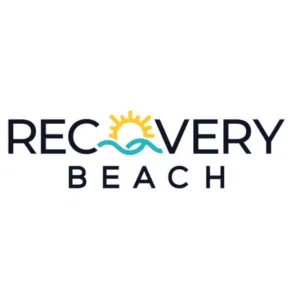Binding before a surgical transition is standard for those folks who are transmasculine or non-binary. However, many people may be wondering why a binder is worn after receiving top surgery and what it means about the surgery itself. The Gender Confirmation Centre breaks down everything you need to know in their Post-Operative Binder FAQ video.
Should You Wear a Post-Operative Binder After Your Top Surgery?
It all depends on the procedure that you have done and what your surgeon recommends. Post-operative compression can be essential during the healing process. Even though wearing a binder post-surgery can cause discomfort, compression will minimize bruising and swelling. It will also hold the surgical area securely in place while supporting the intended chest contour.
The binder can be provided to you by your surgeon if it is needed. For the most part, a compression binder is to be worn for three to six weeks after surgery. Be sure to follow your surgeon’s recommendations when it comes to post-operative compression.
Why Is an Ace Bandage Required After Surgery?
Some surgeons may recommend that you use an Ace bandage as opposed to a binder for post-operative compression. The reason for this is that Ace bandages are more affordable than a medical compression binder.
How Can You Take Care of Your Chest After Surgery?
Your surgeon will provide you with post-operative instructions on how to take care of your incisions. If you need to empty your drains, they will instruct you on how to do so.
At the time of surgery, your surgeon will provide a compression surgical vest (binder). It will be applied over the dressing and should be worn 24/7 for one month after surgery.
After this time frame, you will not be required to wear it again. During the first month, light external pressure from the vest/binder will minimize complications after surgery, like swelling, bruising, seroma, or nipple issues. If the vest/binder provided is too tight, then you are permitted to loosen it to a degree. The vest/binder aims to create continual external pressure on the chest at all times.
You can bring an old binder during your first follow-up, and we will switch you into it. As long as this binder has external compression, it is suitable. After one week, the compression vest can be washed and dried in your washing machine and dryer, then reapplied to your chest immediately.
Things to Avoid After Surgery
Be sure not to lift your arms above your shoulders or stretch backward for one month following surgery. It is essential not to pull the scars in front of the chest and risk ripping open any internal stitches. You will also want to minimize the risk of the incision partially opening up.
Here are some other activities to avoid after surgery:
• Be sure not to engage in sports or heavy lifting (over ten pounds) for one month after surgery.
• Do not remove the original dressing on your own or change it. It should also not get wet. You may shower directly after surgery but only do so only from the waist down. A sponge bath on your armpits or your face is acceptable.
• After your first dressing change, you can get the chest wet in the shower gradually. The shower water will need to be clean and safe. You will not be allowed to bathe or go swimming for a month following surgery.
Should You Avoid Nicotine or Marijuana After Surgery?
Nicotine products, like cigarettes, vaping, cigars, or a nicotine patch cannot be used for two months after surgery. These products are too risky since nicotine is associated with complications with healing skin.
Marijuana does not have the same effects as nicotine when it comes to the healing process. However, you must still avoid smoking marijuana one week following surgery because your throat may be irritated from the breathing apparatus while you were under general anesthesia.
You will also want to avoid breathing in any fumes for a week after surgery.
What Are Some Lifestyle Tips Following Surgery?
If you are a vegetarian, you must eat additional protein sources containing essential amino acids during the months following surgery.
You can sleep in any comfortable position. Some surgeons assert that sleeping on your back for the first week is the best way to enhance nipple graft survival. However, there is no evidence to support this claim.
Are There Complications for Top Surgery?
Complications are extremely rare, but they would usually happen within the first couple weeks of surgery if they do occur. Here are some of the most common:
• Risk of bleeding
• Infection
• An adverse reaction to anesthesia
• Poor wound healing
• Seroma (an accumulation of fluid underneath the skin)
• Hematoma (a solid swelling of clotted blood in your tissues)
• Tissue necrosis in the nipple (damaged or dead body tissue)
• Scarring
• Unsatisfied with appearance post-surgery
• Asymmetry
Post-Operative Binder In Summary
A Post-Operative binder is necessary for optimal healing in many top surgeries for transmasculine, non-binary, or gender non-conforming folks. Be sure to follow your surgeon’s instructions closely so that you can have a healthy recovery.
Want to learn more about gender-affirming surgery? Here is everything you need to know.















